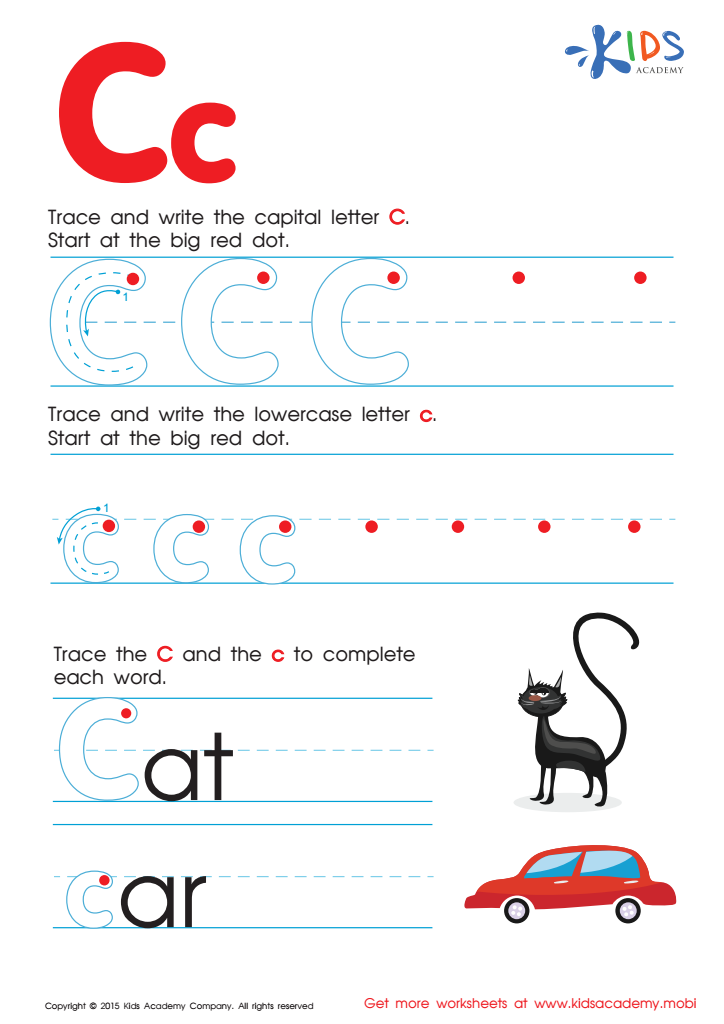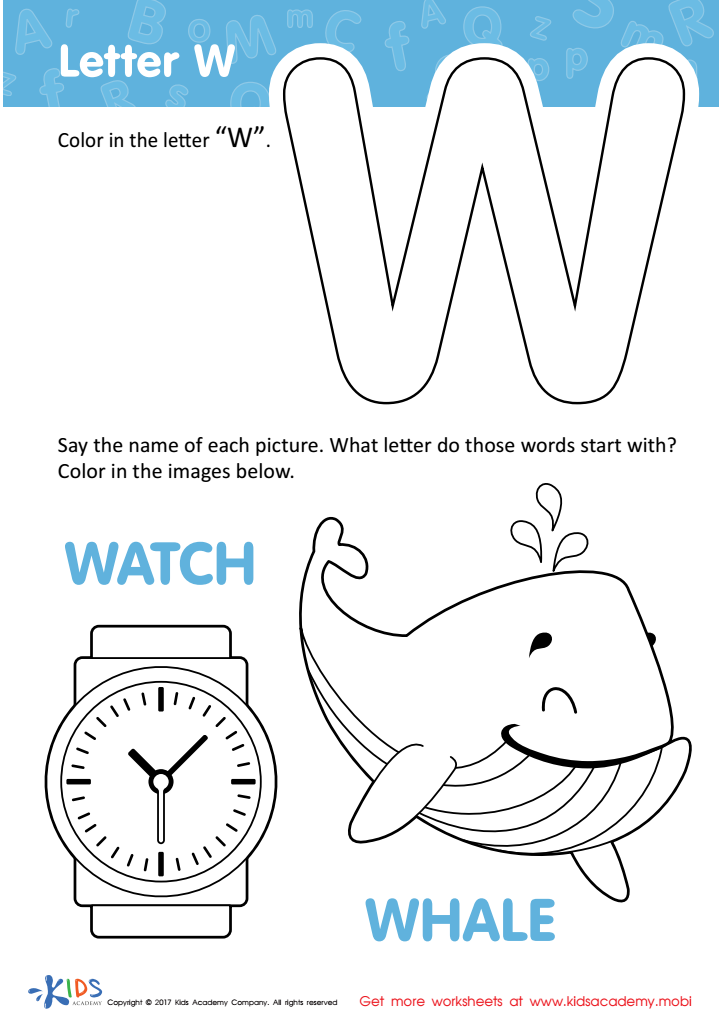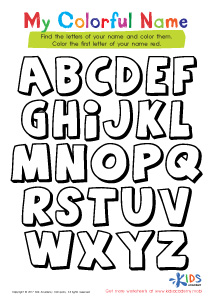Letter tracing skills Grade 2 Alphabet Worksheets
3 filtered results
-
From - To
Boost your child's handwriting confidence with our Letter Tracing Skills Grade 2 Alphabet Worksheets! Designed specifically for second graders, these engaging worksheets ensure mastery in writing each letter of the alphabet correctly and consistently. Our fun and interactive sheets combine visual guides and structured practice to enhance letter formation and fine motor skills. Ideal for both classroom and at-home practice, Kids Academy's meticulously crafted activities make learning to write an enjoyable experience. Assist your child in developing fluent, legible handwriting while building a solid foundation for future academic success. Explore our collection and watch their writing skills flourish today!


Letter T Coloring Sheet


Letter C Tracing Page


Letter W Coloring Sheet
Letter tracing skills are a crucial part of learning for second graders, as they form the building blocks for developing proficient handwriting, reading, and overall literacy. When children engage in letter tracing, they enhance their fine motor skills by practicing the controlled movements required to form each letter accurately. This aids in hand-eye coordination and muscle memory, which are essential for legible and confident handwriting.
Additionally, letter tracing reinforces letter recognition and the alphabetic principle, which states that letters represent sounds. This understanding is fundamental as it supports their ability to decode words, a critical component in early reading skills. As children trace letters, they also learn correct letter formation and spacing, which prevents the development of poor writing habits that can be difficult to correct later on.
Moreover, the act of tracing letters fosters concentration and patience, helping children develop the focus needed for more complex academic tasks. For teachers and parents, paying attention to letter tracing practice ensures that children are laying a strong foundation for future writing and academic achievements. Integrating fun and engaging letter tracing activities can make learning enjoyable, giving children a positive start on their journey to literacy success. Overall, these skills are integral to a child's educational development and confidence in their learning abilities.
 Assign to My Students
Assign to My Students


















